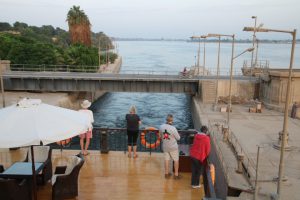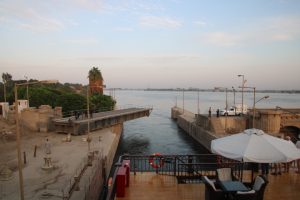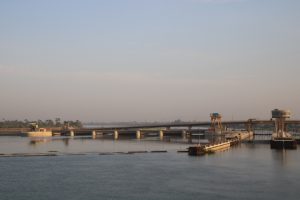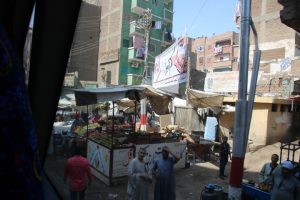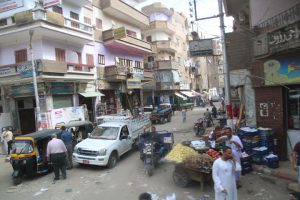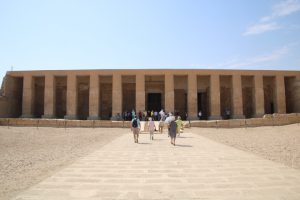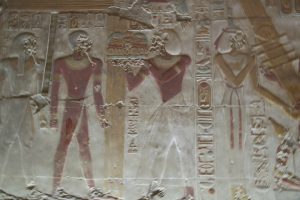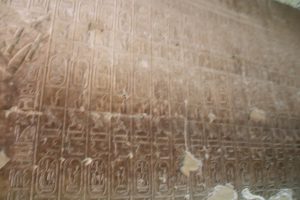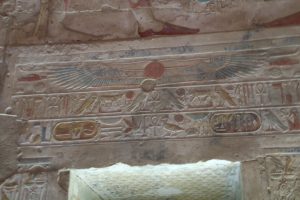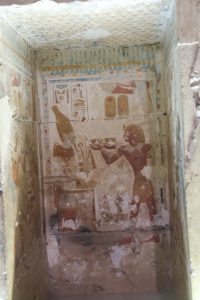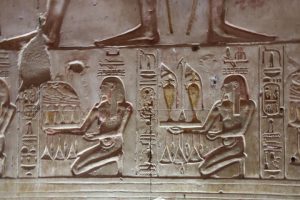We left Nag Hammadi during the early hours and by 05:30 a.m. had arrived at the Abu Homar Barrages. The British built one had an open lock to allow the Nile to flow unhindered up to the new barrage. The road across the barrage crossed the lock by swing bridge. This was opened by the ship’s crew using a capstan, the arms of which were stored in a nearby room opened by the bridge master, who arrived by motorbike. As with the other British built barrages there are signs that this place has seen busier and better days.
Sailing through, we waited at the new barrage for its 8:00 a.m. opening. After dropping about 4 metres we continued northwards to Al Balyana.
Arrival time was 10:00 a.m. and shortly after we transferred to the historical site at Abydos. Our coach squeezed through the narrow shop-lined streets thronged with people all waving ‘Hello’. This visit of ours is so rare that there was a unified show of welcome.
The major attraction at Abydos is the Temple of Seti I (1294 – 1279 BC). It is a limestone structure with lots of colourful reliefs and an unusual ‘L’ shape. The temple is entered through a destroyed pylon and two open courtyards in front of the main entrance with 7 doorways. Now only the central doorway is in use.
Inside is the first hypostyle hall completed by Seti’s son, Ramses II. The second hypostyle hall was the last part of the structure to be decorated by Seti, because these temples were started at the end and finished at the beginning. The colours of the reliefs are brilliant. In a side corridor is the Gallery of the Kings. It is a list of all of the Pharaohs with five omissions including Tutankhamun and Hatshepsut.
The afternoon was used to make progress to Sohag where we stayed the night.
